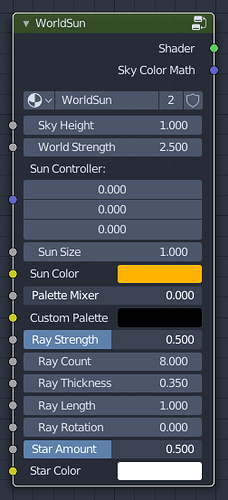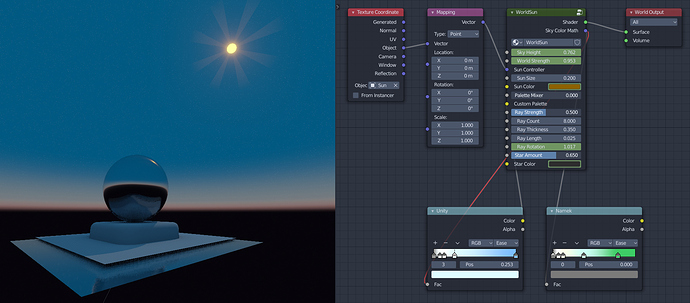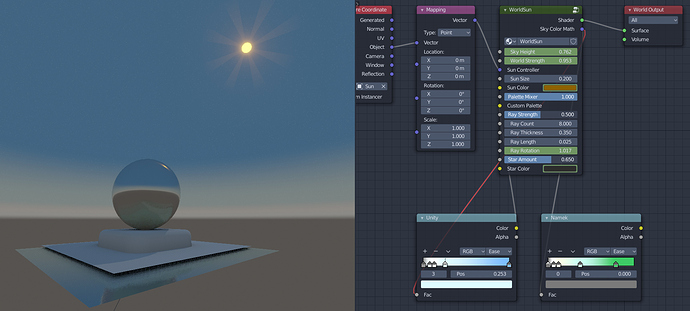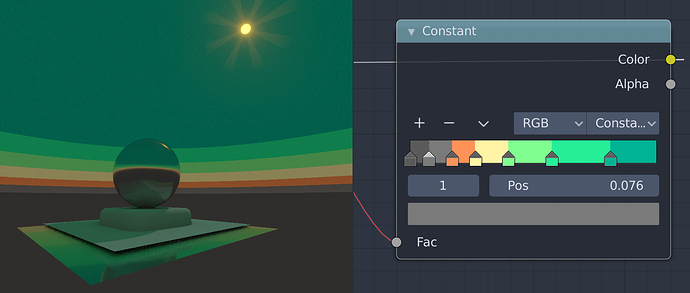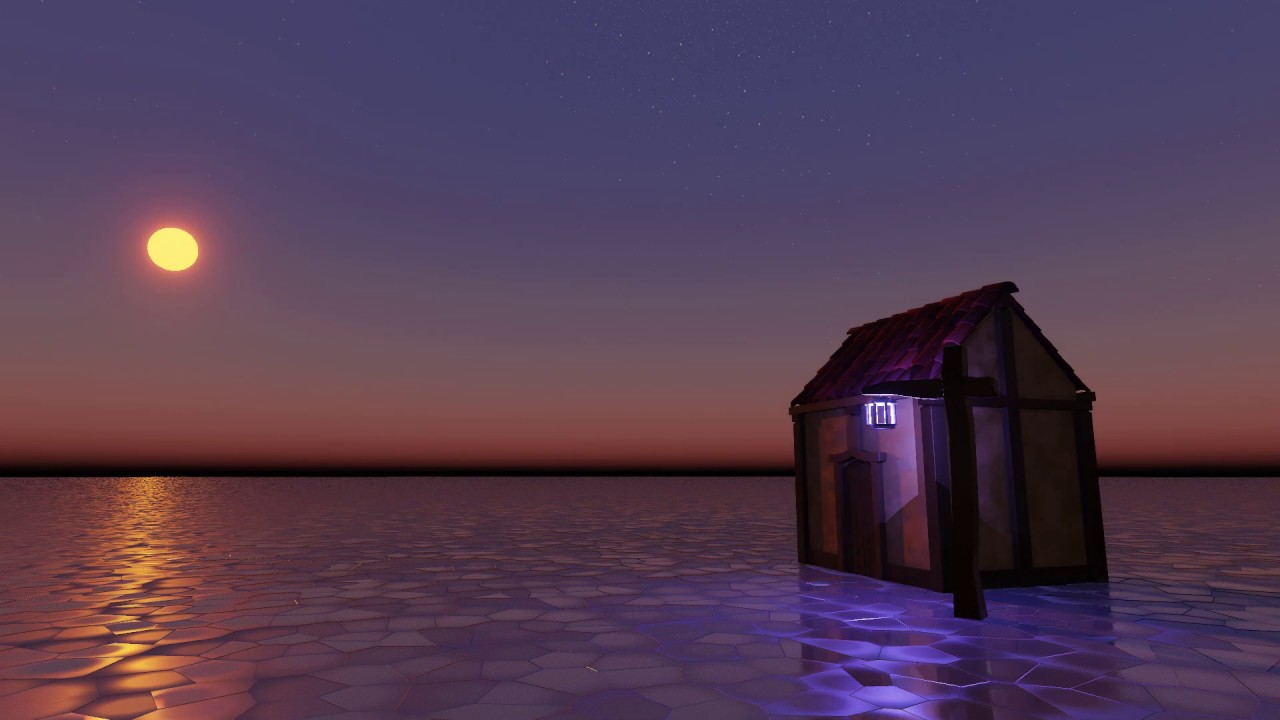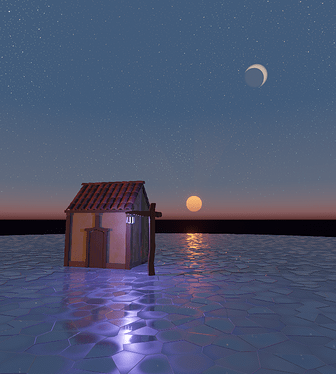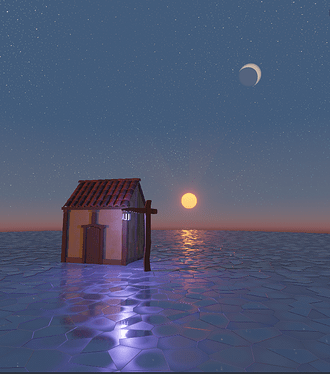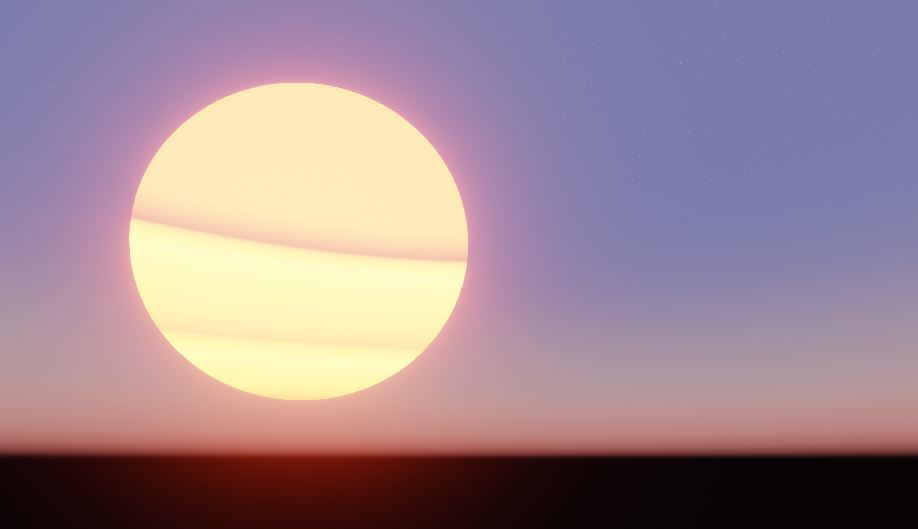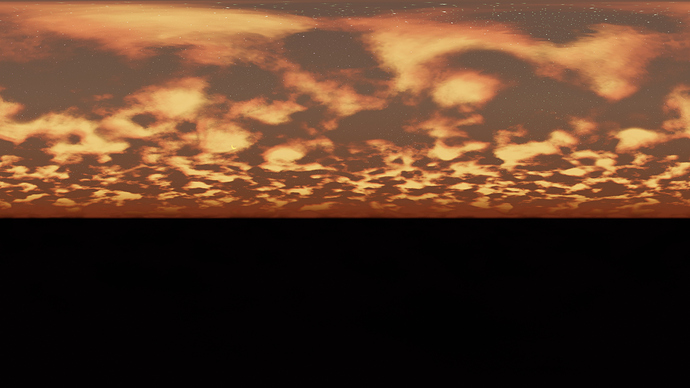After using Physical Starlight & Atmosphere, by Martin Upitis, I attempted to put together what I hope becomes a fraction of what his addon will be in the future. My goal is to eventually make a versatile dynamic sky that’s between semi realistic and a toon sky.
What I have so far is a node group called “WorldSun” that contains controls for sky(Sky Height, strength, palette), sun(position, size and color), “sunshine”/“rays” and a basic start for stars.
One main factor in making this node group was that I was testing UPBGE EEVEE along with using Physical Starlight but had some issue which only allowed the sun lamp(the one added by the addon) to only show up on one scene when switching levels or scenes in viewport. I also wanted more control of the sun’s(lamp) color and it’s own rotation so I made it possible by having a “Sun Controller” input, which is meant for a texture coordinate, and a color value that affects the sun’s color and brightness. For the sun to appear in the sky a texture coordinate set to object and an object need to be selected. In the picture below I set the object to a sun lamp, therefore the sun’s location will be determined by the rotation of that lamp. One thing to note is that the mapping node is optional(doesn’t need to use an object) and the object set to be the controller must remain at 0,0,0 and should not be scaled.
The “WorldSun” node contains a palette which is used in the picture above, but I didn’t want to have to go into the node group to change it every time so there is an input “Custom Palette” for just that. To input a palette, connect the color output of a color ramp to “Custom Palette”, then connect the “Sky Color Math” to the fac of the color ramp (ignore the dependency loop) and finally move the “Palette Mixer” slider to change/mix the palettes.
The following are some of the palettes I added.
Namek Palette
Unity Palette
Depending on the type of project one might be working on, the sky and the way it looks can be an important aspect so changing the interpolation mode might help.
The node group is made up of a few other node groups and most inputs are labeled so it shouldn’t be too difficult to get around for people who have some experience with nodes and wish to make their own changes. While creating this post I came up with a list of several new things to add and ways to approach them but they will be limited to my knowledge and how well they can be included without affecting performance too much.
I did leave out directions to some of the inputs but I hope they’re self explanatory or at least fun to figure out. The animation from the video and palettes from the pictures are included in the blend file and can be tweaked and used for whatever purpose.
World Sun.blend (994.3 KB)

